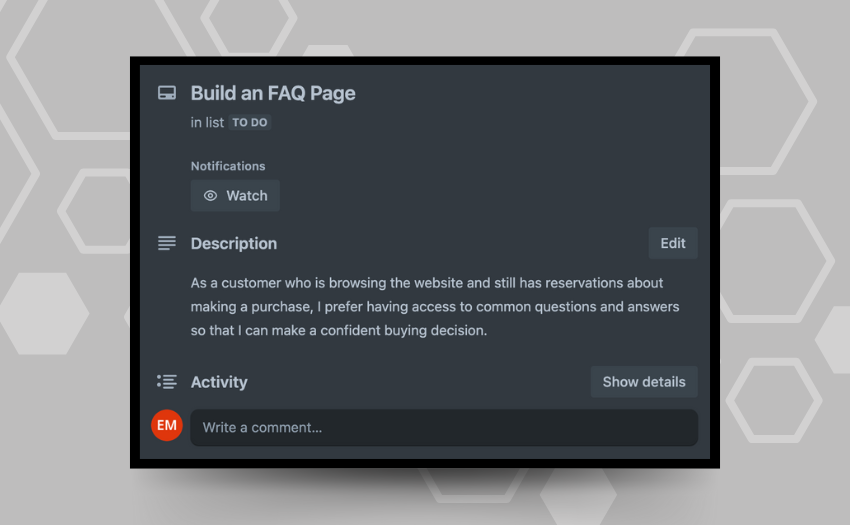Given-When-Then Format
One popular format for writing acceptance criteria is the “given-when-then” format. The style is a standard structure for scenario-based acceptance criteria or test cases, especially for development teams rolling out new features.
The format includes the following components:
Given: How the scenario starts.
When: The change to the scenario.
Then: The result of the change.
Here’s an example of a user story we’ll use to write our acceptance criteria:
User story title: Publish an article about acceptance criteria
User story description: As a learner who is new to acceptance criteria, I want to know what it is and how to write it so that I can begin incorporating the practice into my project management/user stories.
Given-When-Then Format Example
Given the article is ready for publication,
When I publish the article on the website,
Then, the article will be visible to readers on the website.
Given the article is published on the website,
When I schedule the article for sharing on social media,
Then, the article will be visible to followers on social media.
Bullet List Format








